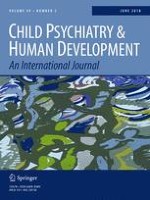21-09-2017 | Original Article
Independent Contributions of Early Positive Parenting and Mother–Son Coercion on Emerging Social Development
Gepubliceerd in: Child Psychiatry & Human Development | Uitgave 3/2018
Log in om toegang te krijgenAbstract
In the current study, we explored associations between parent–child coercion and positive parenting in the toddler period in relation to children’s social-behavioral development during the school-age period. The data were drawn from the Pitt Mother & Child Project, a sample of 310 low-income, ethnically diverse boys. Drawing on tenets of both attachment and social learning theory, it was hypothesized that coercive mother–son interaction would lead to reductions in positive maternal parenting in the toddler period, and that both positive parenting and mother–son coercion in the toddler period would contribute to children’s conduct problems at school entry and lower social skills and peer rejection in middle childhood. The results were largely confirmed, such that mother–son coercive interaction at 18 months was related to decreases in positive parenting at 24 months. Additionally, mother–son coercive interaction and positive parenting at 24 months were linked to child conduct problems at age 5, which in turn predicted child social skills and peer rejection during middle childhood. In addition to indirect effects through child conduct problems, mother–son coercion continued to be independently related to school-age peer rejection. The findings are discussed with respect to the importance of early coercive interactions in the growth of child social-behavioral development from early to middle childhood.
